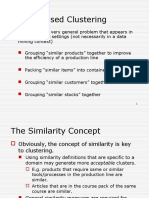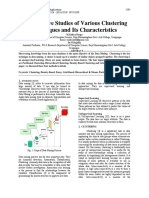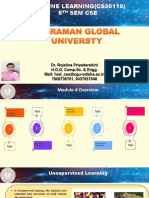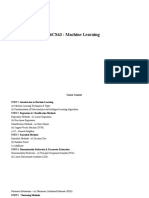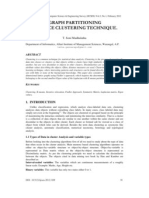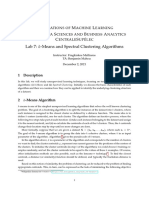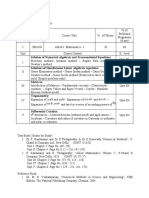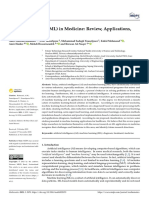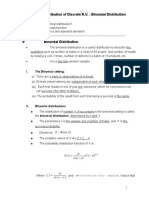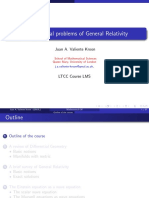0% found this document useful (0 votes)
41 views43 pages02 - Clustering
The document discusses unsupervised learning and clustering algorithms. It defines supervised vs. unsupervised learning, and describes clustering as a form of nonparametric unsupervised learning. The key components of clustering are discussed as proximity measures, criterion functions, and clustering algorithms like k-means and hierarchical clustering. K-means clustering is described in detail, including initializing cluster centers, computing cluster means, and iteratively reassigning samples until cluster membership stabilizes.
Uploaded by
عبد الحميد عمرو عبد الحميد فرغلى هلالىCopyright
© © All Rights Reserved
We take content rights seriously. If you suspect this is your content, claim it here.
Available Formats
Download as PDF, TXT or read online on Scribd
0% found this document useful (0 votes)
41 views43 pages02 - Clustering
The document discusses unsupervised learning and clustering algorithms. It defines supervised vs. unsupervised learning, and describes clustering as a form of nonparametric unsupervised learning. The key components of clustering are discussed as proximity measures, criterion functions, and clustering algorithms like k-means and hierarchical clustering. K-means clustering is described in detail, including initializing cluster centers, computing cluster means, and iteratively reassigning samples until cluster membership stabilizes.
Uploaded by
عبد الحميد عمرو عبد الحميد فرغلى هلالىCopyright
© © All Rights Reserved
We take content rights seriously. If you suspect this is your content, claim it here.
Available Formats
Download as PDF, TXT or read online on Scribd
/ 43







